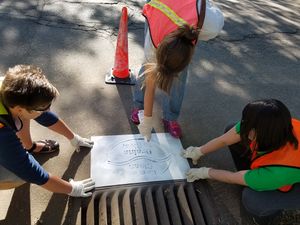
Difference between revisions of "MCM 2 Public Participation/Involvement"
| Line 3: | Line 3: | ||
To keep their communities in the loop, permittees must: | To keep their communities in the loop, permittees must: | ||
| − | :# | + | :#Provide at least one opportunity for the public to provide input on the stormwater pollution prevention program (SWPPP). |
| − | :# | + | :#Provide access to the public to view the SWPPP document, Annual Reports, and other documentation related to the SWPPP. |
| − | :# | + | :#Consider public input. |
| − | :#[https://stormwater.pca.state.mn.us/index.php?title=Documentation_requirements_and_documents_to_retain_under_the_MS4_permit | + | :#Document activities, as described [https://stormwater.pca.state.mn.us/index.php?title=Documentation_requirements_and_documents_to_retain_under_the_MS4_permit here]. |
Additional resources: | Additional resources: | ||
*[https://www.epa.gov/npdes/national-menu-best-management-practices-bmps-stormwater#inv EPA MCM 2 guidance] - EPA's guidance and suggested BMPs for an effective public involvement program. | *[https://www.epa.gov/npdes/national-menu-best-management-practices-bmps-stormwater#inv EPA MCM 2 guidance] - EPA's guidance and suggested BMPs for an effective public involvement program. | ||
Revision as of 20:12, 6 November 2017
Protecting stormwater cannot be completed by one person alone, but will be the result of communities engaging their residents, businesses, and industries to become invested in water quality. The MS4 General Permit requires permittees to find methods to motivate their communities into action through opportunities, programs, or other approaches to prevent stormwater pollution. Common examples seen around Minnesota include storm drain stenciling activities, drain adoption programs, and volunteer monitoring programs.
To keep their communities in the loop, permittees must:
- Provide at least one opportunity for the public to provide input on the stormwater pollution prevention program (SWPPP).
- Provide access to the public to view the SWPPP document, Annual Reports, and other documentation related to the SWPPP.
- Consider public input.
- Document activities, as described here.
Additional resources:
- EPA MCM 2 guidance - EPA's guidance and suggested BMPs for an effective public involvement program.
